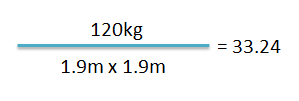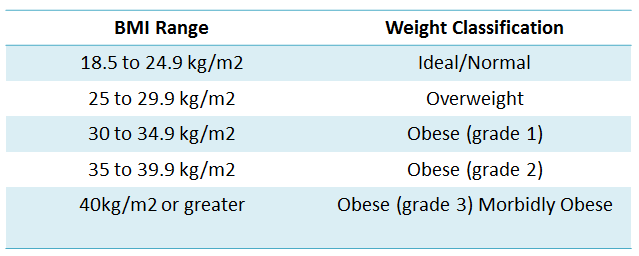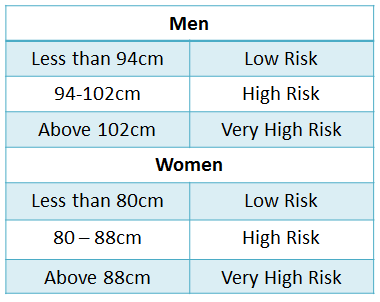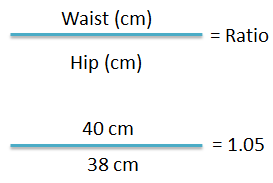Body Mass Index “BMI” is an indicator used by healthcare professionals to determine if someone is of a healthy weight. There is an increased risk of developing serious and life threatening health conditions when a person is overweight or obese.
Most people are familiar with the term and some may even know their own BMI. However, most people don’t understand how to calculate it. Here is the calculation you can use to work out a customer’s BMI:

For example, for a person weighing 120 kg and measuring 1.9m would have a BMI of 33.24. As 1.9 x 1.9 = 3.61 120 divided by 3.61 = 33.24 This calculation should only be used for adults (pregnant or breastfeeding women should not rely on these BMI readings) and no action should be taken based on its value other than to consult a pharmacist or GP. Standard BMI charts should not be used for children; there are specialised charts for this age group that are used by healthcare professionals with a specific interest or training in childhood obesity (www.patient.co.uk).
This calculation should only be used for adults (pregnant or breastfeeding women should not rely on these BMI readings) and no action should be taken based on its value other than to consult a pharmacist or GP. Standard BMI charts should not be used for children; there are specialised charts for this age group that are used by healthcare professionals with a specific interest or training in childhood obesity (www.patient.co.uk).
There are different BMI ranges which indicate a person’s weight classification:

For those that are classed as grade I and II obese, BMI doesn’t accurately reflect if they are at risk of developing weight related health problems, therefore BMI is combined with waist measurement.
It should be noted that BMI calculations can be misleading. Those considered as having a high BMI may in some cases be healthier than someone who appears to be conventionally healthy. This is because BMI is not always an accurate indicator of being overweight for people who have a high muscle mass, such as body builders. Asian customers will have a higher health risk associated with a lower BMI.
Waist measurement
The larger a person’s waist measurement the greater the risk of developing specific health conditions, particularly coronary heart disease and type 2 diabetes. Waist circumference should be used in customers with a BMI less than 35 to assess any health risk.
Many people do not measure their waist in the correct place, here is a guide you can provide to customers to help accurately measure their waist:
- Locate the bottom of the ribs and the top of the hips.
- Naturally breathe out.
- Midway between the above points is the waist.
- Wrap a tape measure around the waist to obtain the measurement.
- If a customer struggles, advise them to stand in front of a mirror.
As a guide, if a man’s waist measurement is 94cm or above and a woman’s waist measurement is 80cm or above, they are at increased risk. This risk is graded according to the measurement:

Waist to Hip Ratio
To work this out, use a tape measure and measure the hips and waist and divide the waist measurement by the hip measurement.

A ratio of 1.0 and above in men and 0.85 and above in women is considered to be high and indicates they are at increased risk of developing weight related health conditions. If a person has a high waist to hip ratio this indicates they are apple shaped which means they carry weight around the waist and fat is more likely to be stored around the abdominal organs.
This distribution of fat puts them at higher risk of developing weight related health conditions. If the ratio is lower the person is pear shaped which means they carry weight around their hips and thighs. Whilst pear shaped people would benefit from losing weight as any excess weight can cause health problems, the risk of developing life threatening or debilitating conditions is slightly less than those who are apple shaped.
